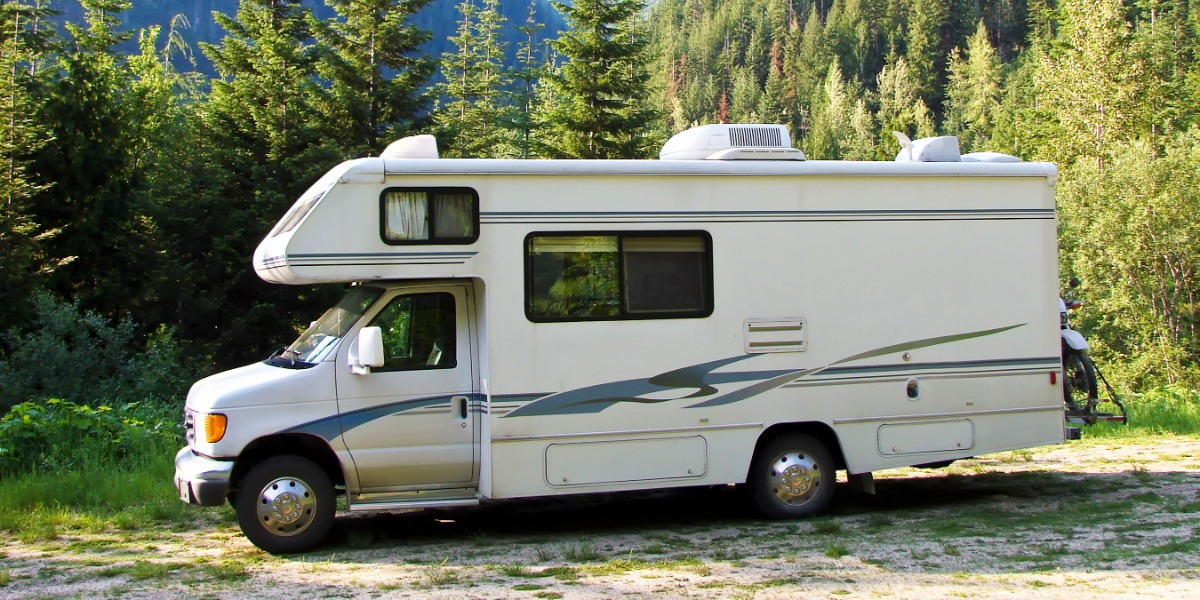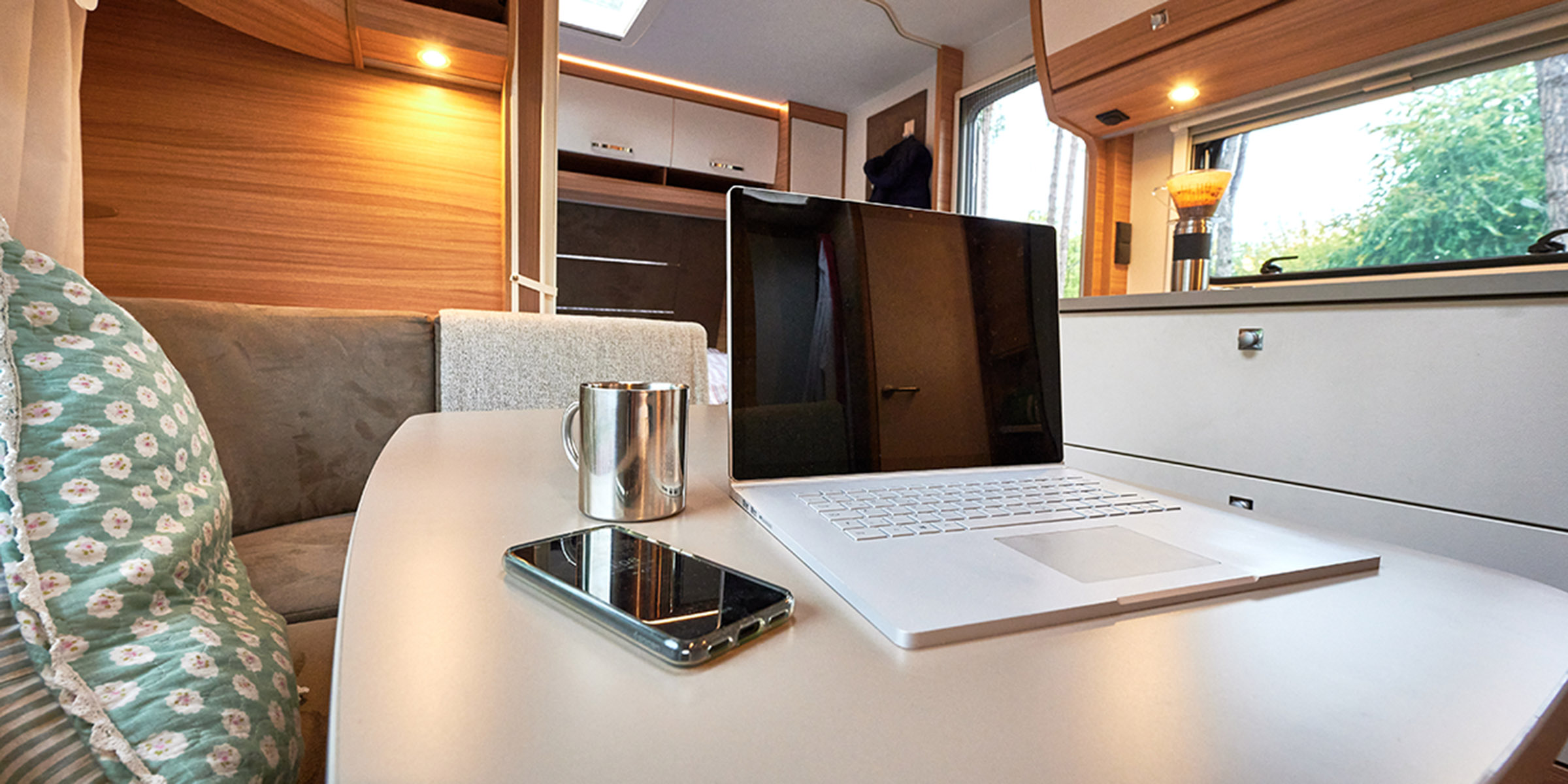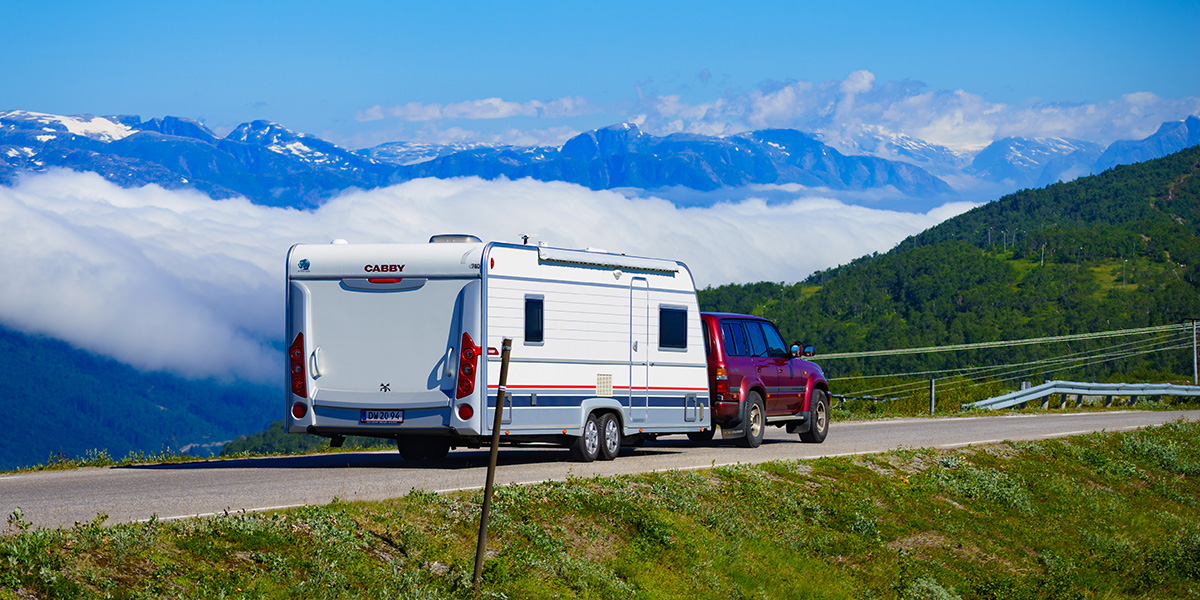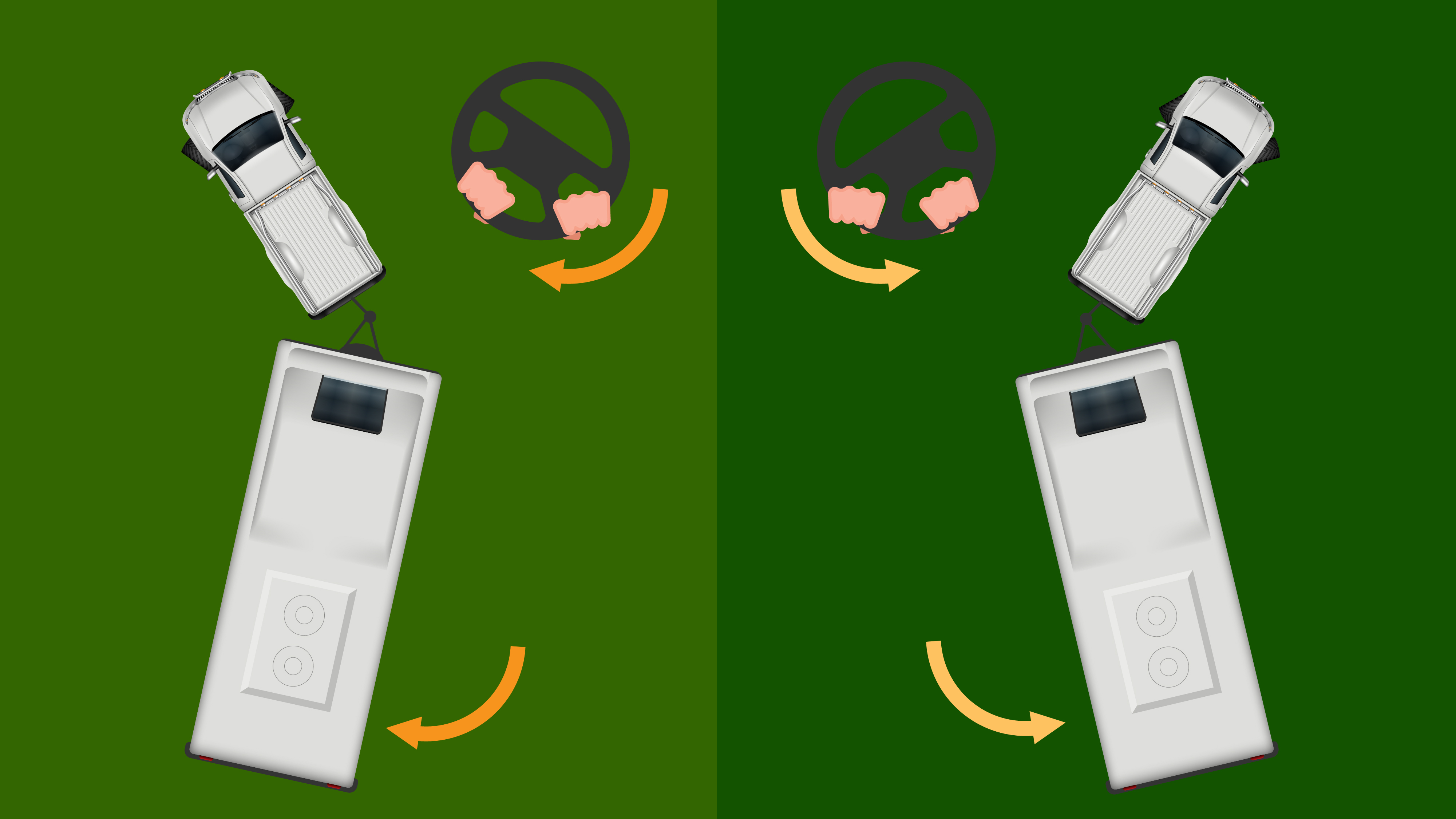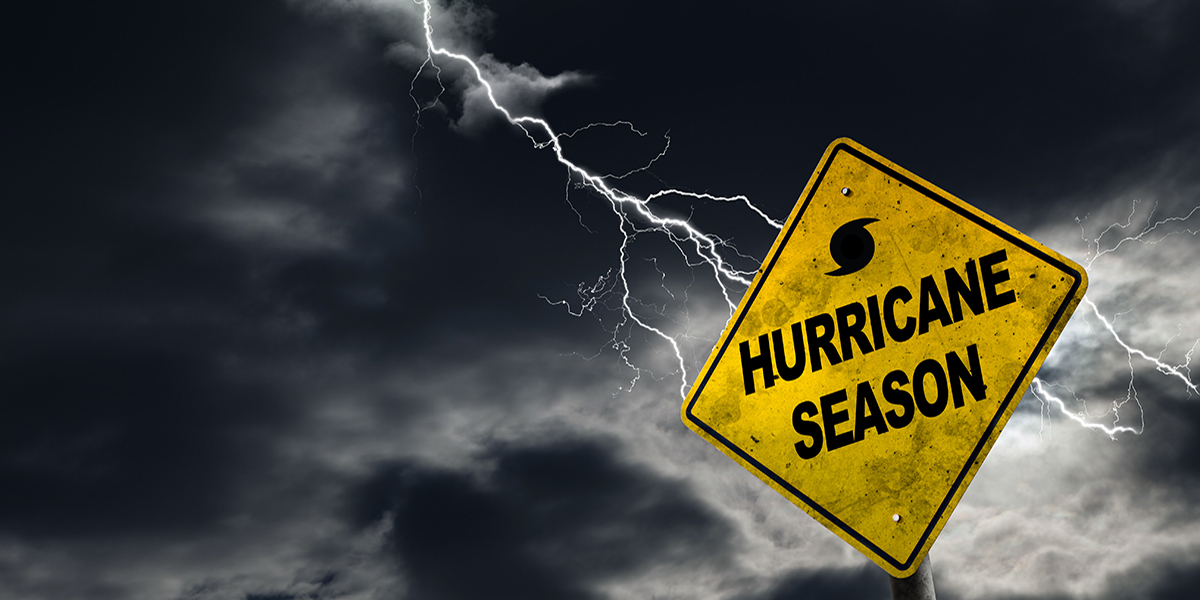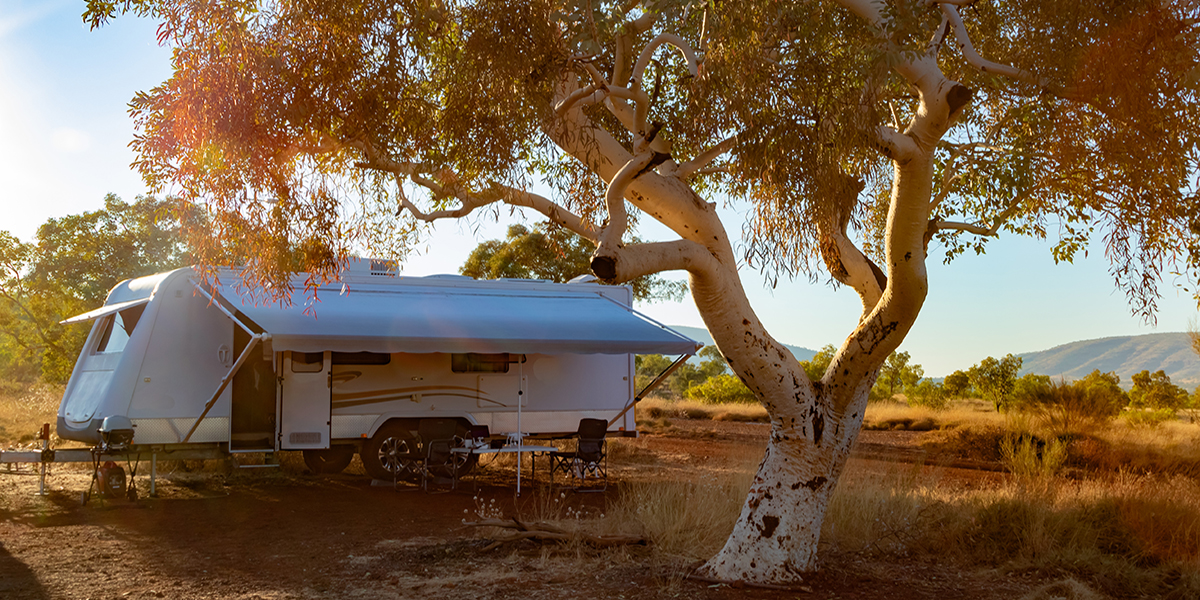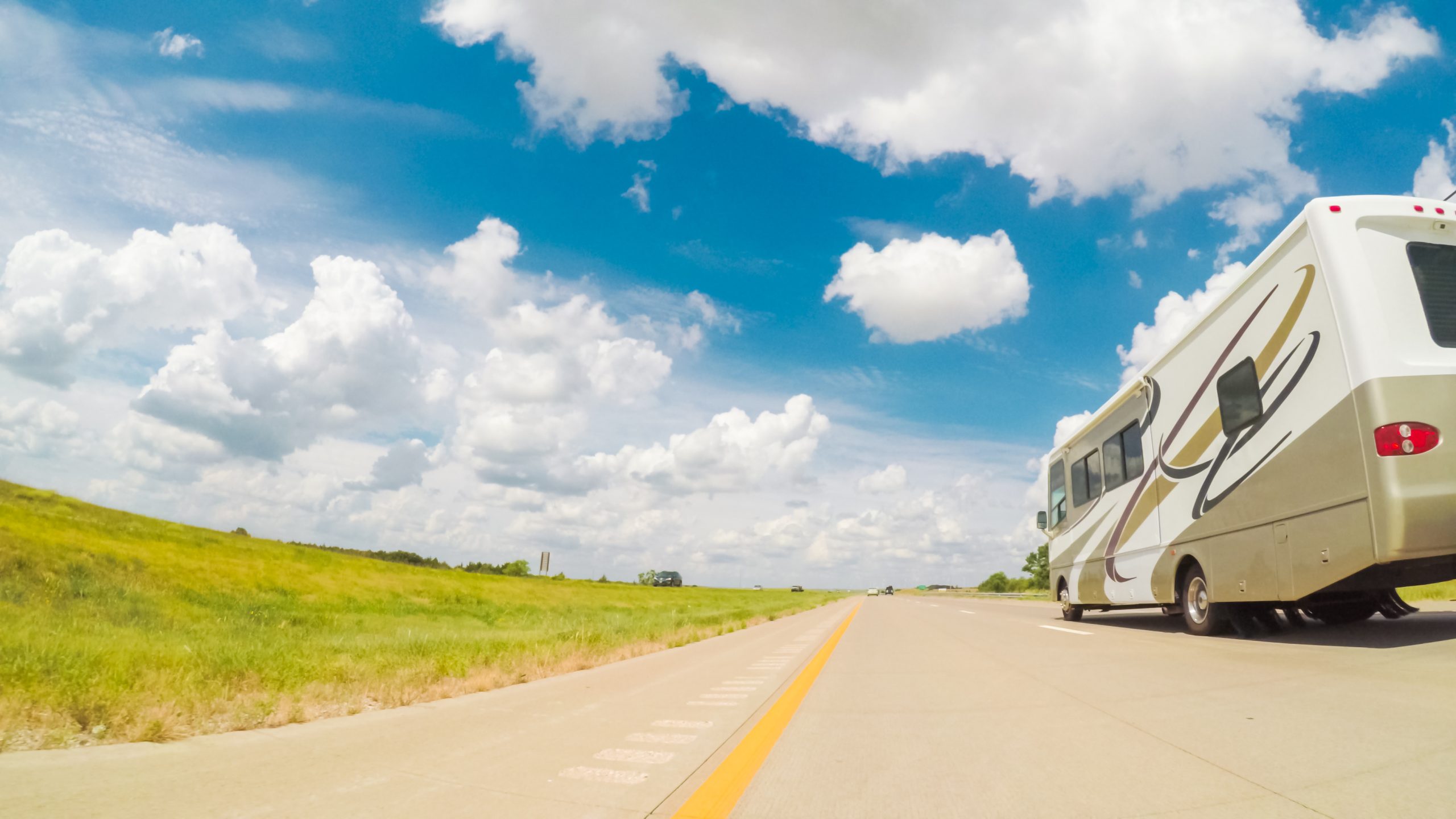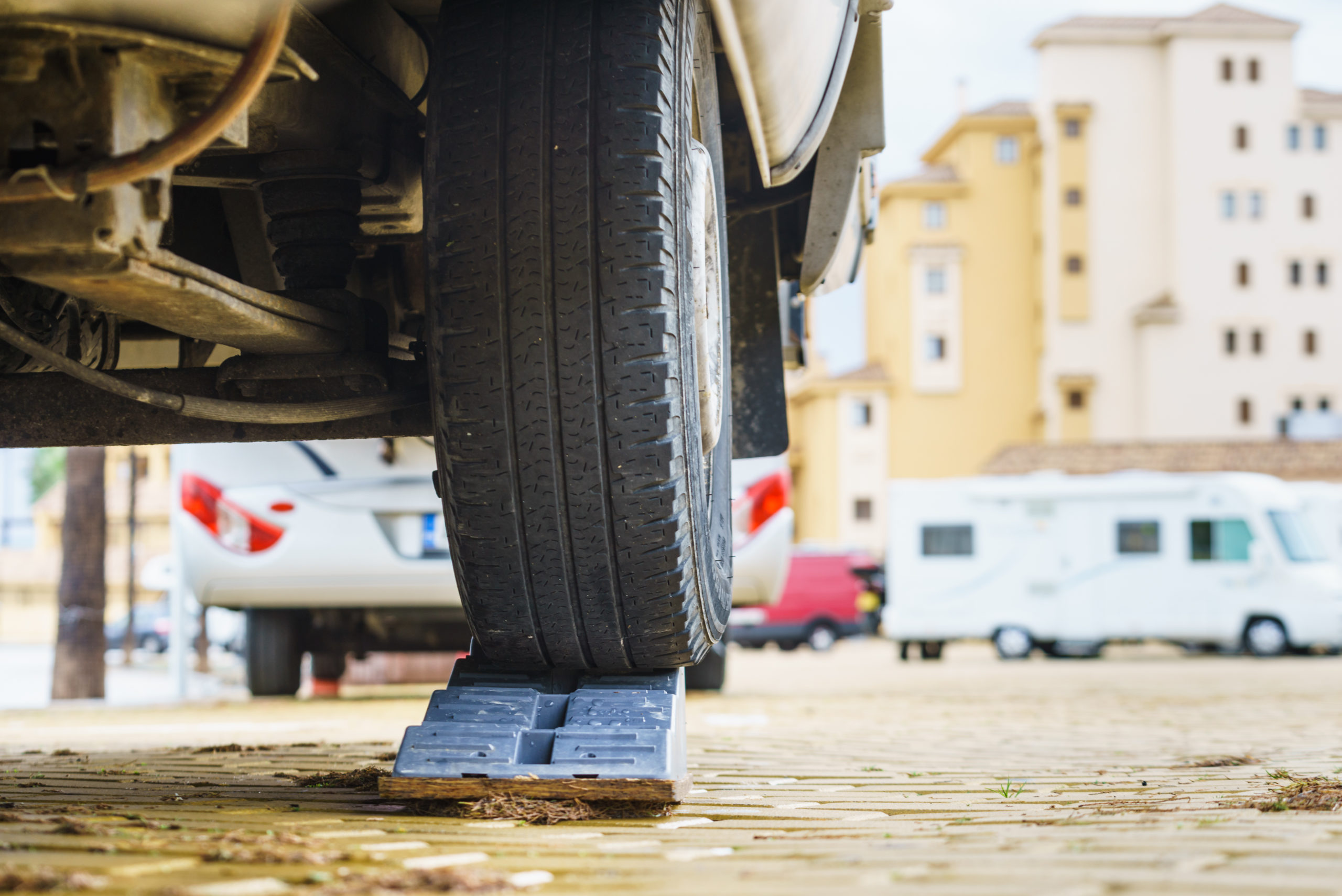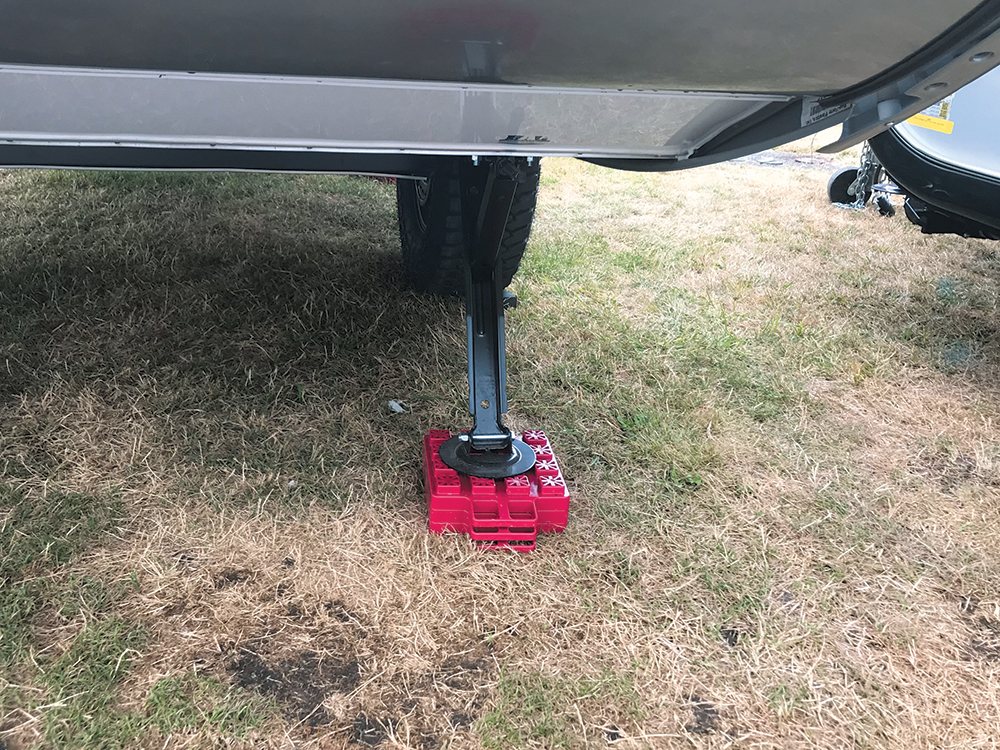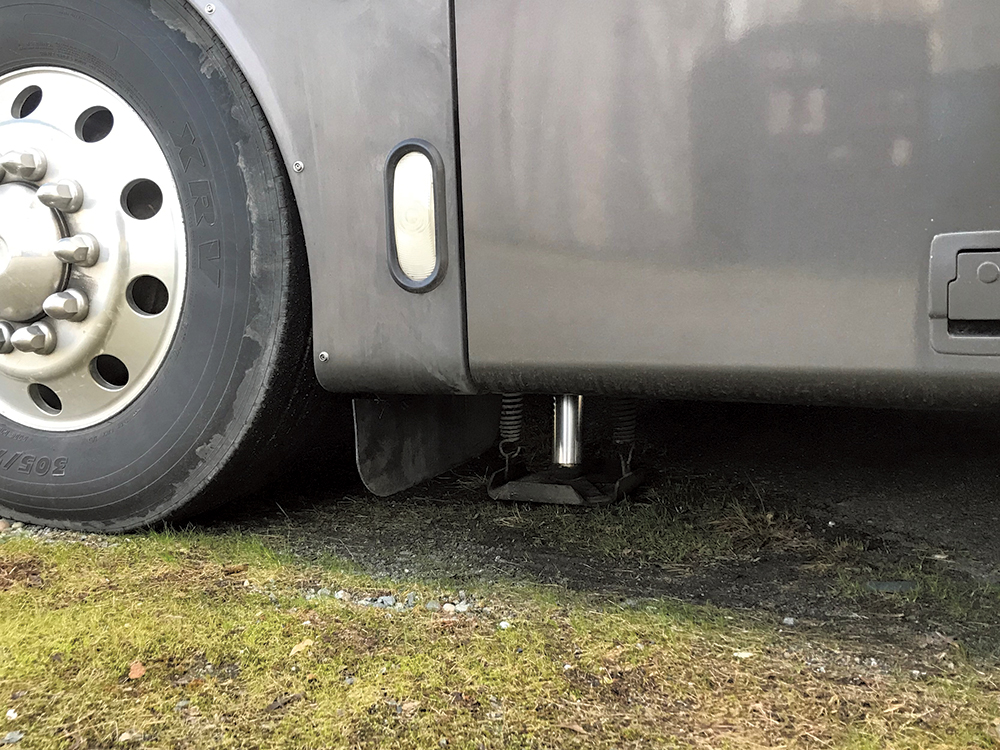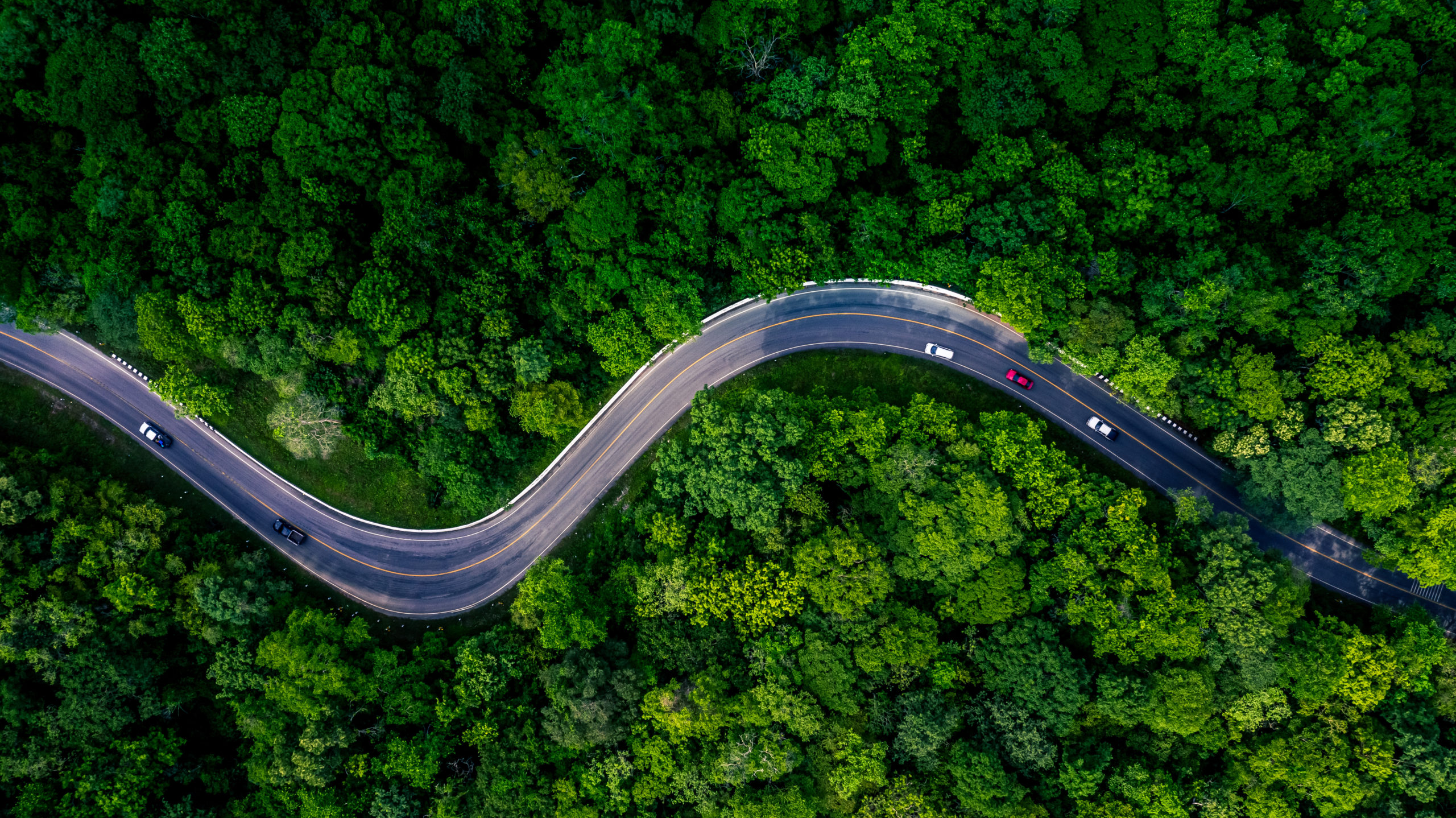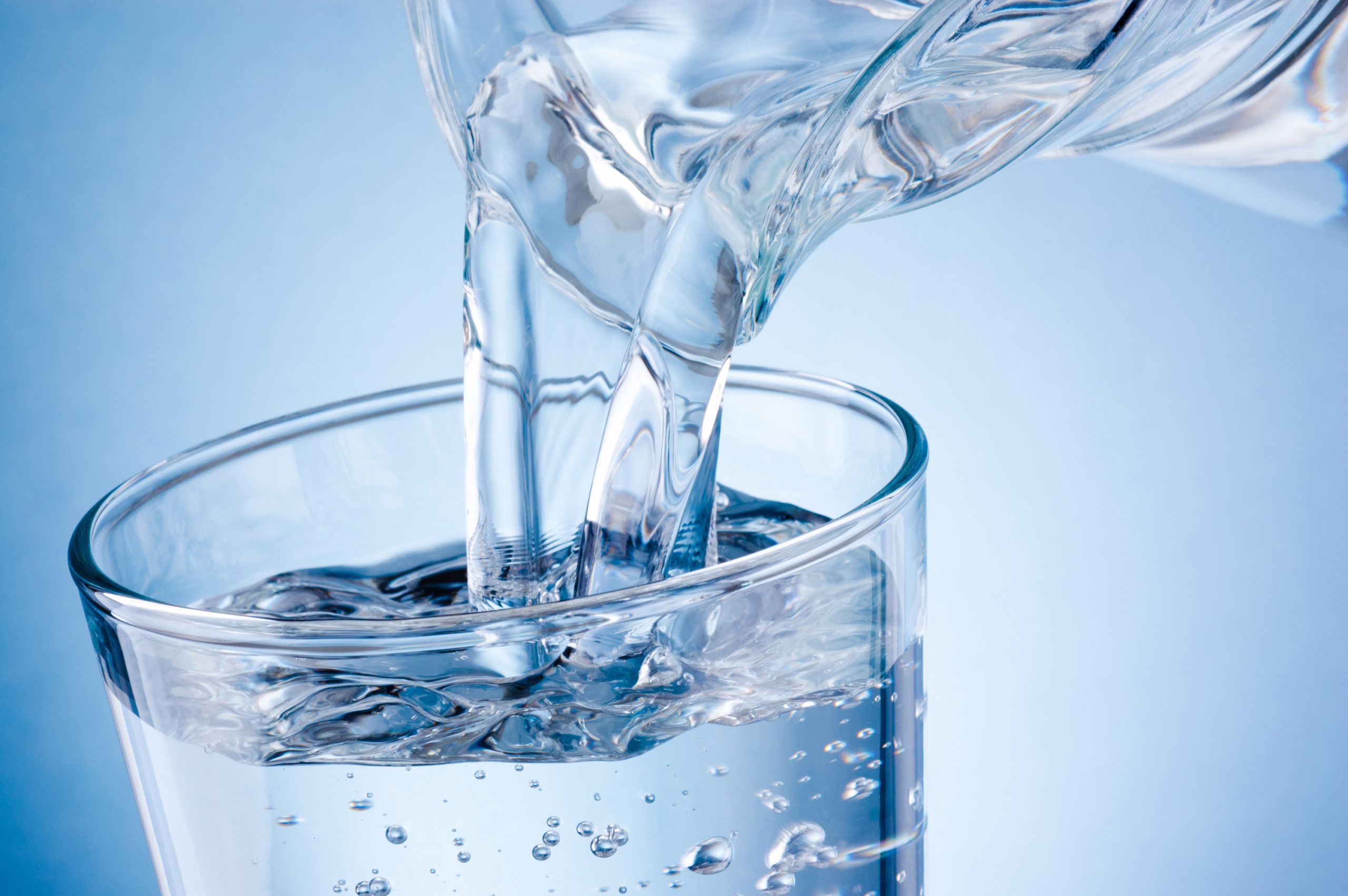A variety of products are available to improve the quality of your RV’s drinking water. When you fill your RV with fresh water, it may contain minerals, sediment, and chemicals, as well as bacteria and microorganisms such as cysts that can cause serious health issues. Calcium and lime are minerals that can damage plumbing fixtures. Iron can be equally destructive. Fortunately, water can be treated, but you must determine the type of water-conditioning system that will best meet your needs.
Filters
It may be helpful to understand the basics of filters. Filters are rated in microns. One micron equals one millionth of a meter. (For comparison’s sake, the diameter of a human hair can range from about 40 microns to more than 80 microns.) So, a 10-micron filter removes particles that are 10 microns or larger; anything smaller passes through the filter. A 10-micron filter removes smaller particles than a 40-micron filter, for instance. If two filters are similar in size, the filter with the lower numerical rating will restrict water flow more than the filter with the higher rating, because the finer filter media creates more resistance to water flow. Choosing a larger filter with more surface area can restore the water flow to an acceptable level.
The material that filters the water — the media — can vary. In a basic filter, pleated paper removes particles much like a vehicle’s air filter does. Once particles fill up the paper pleats, the filter restricts water flow and must be replaced. Other basic filters may employ a blow-molded media that allows the particles to be embedded into the filter with some depth, which results in longer life. Basic water filters are suitable for removing sand and solid particles that are larger than the filter’s micron rating. But they will not remove fine particles or ions that are suspended in the water. So, while they can filter the water, they do not treat it. Granular activated carbon (GAC) filters remove chlorine, sulfur, and other contaminants from water, as well as taste and odor. Some RVers have expressed concern that using carbon filtration to remove chlorine may cause stagnation in fresh-water tanks.
A tank’s vent allows chlorine to evaporate anyway. Rather than relying on chlorine to prevent stagnation, make sure the fresh-water tank doesn’t stay filled with the same water for long periods — use the water, or simply drain the tank. Also, sanitize the tank periodically. If the water in the tank is used and replenished regularly, such as when full-timing, you may need to sanitize only annually. But if the RV sits unused for extended periods, you may need to sanitize much more frequently.
A drawback to carbon is that bacteria can grow and build up inside the filter. That can be prevented by choosing a bacteriostatic filter with kinetic degradation fluxion (KDF) media, which are high-purity copper-zinc granules interspersed with the carbon. KDF controls the buildup of bacteria, extending the filter’s life. Chlorine, lead, mercury, and hydrogen sulfide are removed, and even iron, to an extent. The GAC/KDF filters cost a bit more than standard GAC filters, but the results are well worth it. Such filters are available from various vendors, including Hydro Life, Pentek, and Flow-Pur.
Another option is the Pulsar Quantum Disinfection System by US Water Systems. The filter’s media surfaces have been modified via a patent-pending process. According to the company, tests by the EPA and other certified labs have shown that 99.99 percent of microorganisms such as bacteria, yeast, and algae are immediately destroyed as they come in contact with the media. The drawback is that before water enters the Quantum Disinfection System, it must be prefiltered to remove iron, sulfur, manganese, tannins, turbidity, and suspended solids, which can bind the Quantum Disinfection media.
Iron
Iron can affect the color and taste of water, and it can be difficult to remove from water. As noted, KDF-based filters can educe iron to an acceptable level, if the iron content is fairly low. But for water supplies with a fairly high iron content, a dedicated iron filter is required. It also will remove sulfur.
An iron filter draws air into a chamber where the iron or sulfur is oxidized into particulate. The water then percolates over a bed of filtration media, which traps the iron or sulfur oxides. When it is no longer effective, the iron filter regenerates by backflushing, similar to a water softener. However, no salt or brine tank is required. The filter is simply backflushed with water, and then air is allowed to enter the top of the filter to recharge it.
Iron filters can be equipped with manual heads or automatic heads to facilitate regeneration. A drain line must be connected to the gray-water tank or to the sewer to accommodate the wastewater when backflushing, although the water is safe and could be dispersed onto the ground if that is allowed. The media has a long life; it’s likely you’ll never have to replace the filter or its media for as long as you own your RV. Because it does not require disposable filters or salt to operate, it’s basically a zero-cost maintenance item for as long as you own the filter.
Water Softeners
Drinking hard water, which is high in mineral content, is not a known health hazard. In fact, the World Health Organization has determined that hard water could be a good supplementary source of calcium and magnesium. However, minerals such as calcium carbonate cause a lime-scale buildup in an RV’s fresh-water system. The scale can restrict flow in cross-linked polyethylene (PEX) water lines and can lead to galvanic corrosion when two dissimilar metals are in contact. Hard water also inhibits soap suds, leaves soap scum after showering, and produces white calcium deposits on dishes and cups after washing.
Hard water can’t be treated effectively by conventional filters. Treatment requires a water softener, which consists of a tank filled with polymer resin beads. A softener operates on an ion-exchange principle. The resin is treated with a salt brine that coats the beads with sodium ions. As water passes through the softener, the resin exchanges the calcium and magnesium ions for sodium ions, which effectively neutralizes the hardness in the water.
Eventually, the sodium ions become depleted and the resin beads become coated with the calcium and magnesium ions. At that point, the softener can’t treat any more hard water and requires regeneration. During regeneration, the ion-exchange process is reversed. A salt brine passes through the softener, picks up the hard water deposits from the resin media, and carries it into the wastewater through a backwash process. Once these deposits have been removed from the resin, a salt brine runs through the softener to recoat the resin with sodium ions so that it can continue to soften incoming water.
Residential softeners have metering systems and regeneration controls that do this automatically, based on the volume of water. But they are too large for use in an RV. Small, portable units for RVs are available but require manual regeneration.
To determine when regeneration is necessary, RV owners can use inexpensive test strips to measure water hardness according to a color chart. Regeneration generally involves adding salt crystals like solar salt to a filter housing or chamber, and then running water through the softener to dissolve the salt and carry the brine through the resin beads, treating it as it passes through.
In my motorhome, I installed a residential-style softener with a fully automated control head from Motor Coach Water Filtration. The compact package fits into an RV’s basement compartment, yet it has the features of large residential softeners, including a separate brine tank. The system is programmable and automatically regenerates the softener when needed. It also uses less salt during the regeneration process than manual systems. Keep in mind that some claims by those selling water softeners can be suspect. Advertising that says a softener will treat a certain number of gallons is misleading. Water softeners treat a given amount of hardness in water. If the water is mildly hard, the softener can treat many more gallons than when treating extremely hard water. Areas such as the Pacific Northwest, the Southeast (except for Florida), and the New England states generally have soft water, while much of the Midwest has moderately hard to extremely hard water, as do portions of the Southwest. Softeners with larger tanks can treat more water between regeneration cycles.
For RV owners, storage space is limited, so compromises must be made. If space is not available, you can utilize a large softener and place it outside the RV near the campground water supply. However, to prevent damage to the softener, it must be kept from freezing. Also, softeners should be transported in the vertical position to avoid damaging the strainer basket.
Deionized Water
When you wash and rinse your RV with untreated water, minerals in the water leave spots on the painted finish. Deionized rinse water eliminates those spots. Deionized water has had almost all of its mineral ions removed, such as sodium, calcium, iron, chloride, and sulfate. But deionization does not significantly remove viruses or bacteria.
Deionizers are available in a variety of configurations. Like in a water softener, the media in a deionizer eventually gives up its ions and no longer works. It must be replaced or regenerated. Regeneration is feasible only on large-scale applications, because concentrated acid and caustic material are used to strip away accumulated ions through physical replacement. For typical consumer use, such as when washing an RV, replacement cartridges are more desirable. A two-bed system uses separate positively charged and negatively charged ion resin beds. Both types of resin are required to totally deionize water, although mixed-bed systems are available that require only one tank. A mixed-bed system provides the highest water quality, while a two-bed system has a larger capacity.
Once the resin has been exhausted, it must be replaced. Some tanks can be refilled with bulk media, while other systems use disposable cartridges. A dual-probe total dissolved solids (TDS) meter, with one probe sampling incoming water and the other sampling the outgoing deionized water, can tell you when the media is no longer functioning. Deionizer media life can be extended by using regular softened water for washing the RV and reserving the deionized water for the final rinse.
Reverse Osmosis Systems
In reverse osmosis (RO) systems, water is forced through a semipermeable membrane that filters out contaminants larger than the water molecules; smaller particles remain in the water. An RO system removes contaminants such as arsenic, sodium, nitrates/nitrites, copper, lead, and some organic chemicals. The municipal additive fluoride also is removed. RO systems require pressure to force the water through the membrane. A fair amount of wastewater is involved in the process, and the fairly low water pressure in an RV water system means you expend more water than you purify. Because the filtered water passes through the RO system quite slowly, it goes to a storage tank for use as needed.
Water must be reasonably clean before entering an RO system, so prefilters and carbon block filters are used to remove contaminants such as volatile organic chemicals, chlorine, and synthetic chemicals. The end product is RO water that is 95 percent to 99 percent pure. Some experts argue that such water can be too pure, because in addition to harmful contaminants, RO removes calcium and magnesium — minerals that are essential to our health.
Reports from the World Health Organization (WHO) point out that while food is our principal source of calcium and magnesium, many people’s diets fail to include the recommended amounts. For some people, “mineral-rich drinking waters may provide substantial contributions to total intakes of these nutrients . . .” a 2009 WHO report said. The report also said it’s worth weighing the potential benefits of systems that remove minerals from water against the potential harm of reducing calcium, magnesium, and fluoride levels below recommended thresholds.
You can find experts on both sides of this issue. If you are considering the purchase of an RO system, do some research so you can make a decision that best fits your needs. If you have an RO water system and are con-cerned about the removal of beneficial minerals, you might consider purchasing a remineral-ization kit that adds calcium and magnesium to water. Also be aware that water produced by an RO system has a lower pH, which makes it corrosive to fresh-water plumbing. As a result, brass fittings, faucet fixtures, and water pump components may have shorter lives.
Sanitation
Regardless of the filtration method you choose, the system won’t perform its best if bacteria or algae are in the system. You must sanitize the system. Chlorine bleach has its drawbacks. Typically, household bleach is a solution of 5 percent to 7 percent sodium hypochlorite. That concentration drops drastically through gasification — as much as 50 percent in one month — so chlorine as a sanitizer has a short shelf life. Chlorine also penetrates plastic and can harm fresh-water tanks, PEX water lines, and water-pump seals. In addition, when chlorine comes into contact with organic material, it produces trihalomethanes, which are recognized carcinogens.
An alternative is Pro Products’ Sani-System, a liquid sanitizer that is EPA-approved for water softeners, RO systems, and water coolers. Sani-System is an ammonium-chloride-based product that is said to kill 99.9 percent of bacteria within 60 seconds, whereas chlorine bleach and peroxides must be in the system much longer to oxidize or kill bacteria. Sani-System is not an oxidizer and won’t harm plastics, rubber, or polyamide RO membranes. And unlike bleach, which leaves a residual chlorine taste and takes time to remove by continued flushing, Sani-System rinses out of the system easily without an aftertaste. It does not harm carbon, but carbon’s porosity makes it difficult to rinse out completely.
So, the best practice is to remove carbon filter elements prior to sanitizing and replace them when finished. There is no one-size-fits-all solution to water treatment. Choose a method that works for your situation to ensure that you have a safe water supply and a fresh-water system that runs well.
Resources:
CR Spotless Water Systems, C13245 (858) 530-9993 www.crspotless.com
Motor Coach Water Filtration (239) 776-6002 www.motorcoachwaterfiltration.com
On The Go (866) 482-9614 www.portablewatersoftener.com
RV Water Filter Store (602) 625-1875 www.rvwaterfilterstore.com
Pro Products (Sani-System) (866) 452-7842 www.proproducts.com
Softcell Recreational Water Systems, C11469 (612) 325-2886 www.softcellwater.com
US Water Systems (855) 923-6913 www.uswatersystems.com
Western Water Purifier Co., C7 (800) 559-2837
